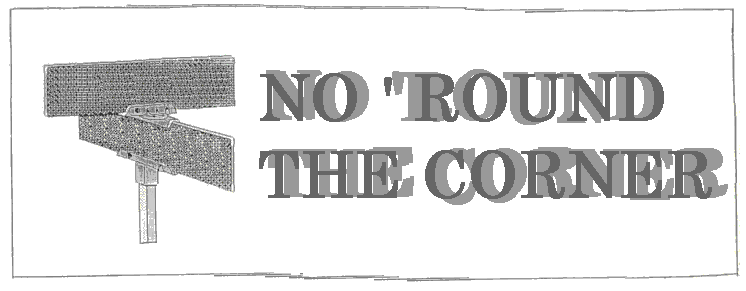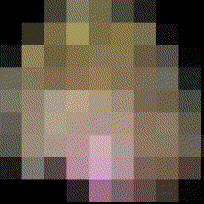Sunday, October 21, 2007
DIY: Damned If You do? Damned If You don’t?
Technocrats are always arguing the social networking capabilities of the Internet and, yeah, it’s difficult to not see the benefits of a connected society. But, for all these advancements, how much better off are we? I mean, Facebook costs employers countless amounts in earnings and lost productivity, MySpace promotes the collecting of fake friends, illegal downloading is destroying the music industry, legal downloading is plagued by DRM locks... and it all becomes clear the Internet is not quite the democratic utopia that many claim. I do not subscribe to the notion that the Internet is detrimental to music, the universal human practice, only that it impinges on the industry of music as we have come to know it. But I’m not writing here to launch a tirade against said industry; that’s all be said and done. I’m more interested in music’s role in the shaping of self and group identity, and how this has been affected by increased commodification and the growth of online practices.
I, like many, view music as an aestheticisation of experience. That is to say, through listening to music – and interacting with other people, their experiences and opinions about music – I establish, form and maintain elements of my social identity. As Frith says, ‘the experience of music is an essentially humanising experience, a kind of ideal of sociability, a way of making us feel what it is to be engaged with other people’ (Frith, 2001: 28). Online, I align myself with several web sites, tastemakers if you will, from which I also form part of an imagined community, made up of likeminded individuals. It is this point that greatly interests me.
There are some that view these new online music communities as an extension of older movements. For instance the late 1970s New York punks or the Bronx hip-hop scene of the same time; the former who communicated through handmade fanzines, and the latter who copied and traded tapes. This notion sits well with me, especially due to my participation in a number of identifiable subcultures.
More and more I find that I align my identity with the do-it-yourself ethic, which first came to prominence in the punk movement in the late 1970s. Maybe it’s the sincerity of unmediated wares that allures me, or that I’m simply defining myself by what I’m not (i.e. commodity fetishist), I don’t know. Perhaps I’m over-analysing things – as I am quite prone to do.
Back to this idea of online social networking, I’m interested to see where the traditional values of D.I.Y. fit in. As noted, I regularly attend D.I.Y. shows at warehouses and art spaces, which, despite a lack of conventional promotion, draw reasonable attendances. This Wednesday I will be attending a gig by hardcore act La Quiete from Italy, at Newcastle’s Sushi + Cigarettes gallery. Shows like these, and the small-time bands involved, rely heavily on the Internet, in particular networking sites like MySpace, which “provide an outlet for groups and artists to promote their music to a wider audience” and build up vibrant culture of online discussion about music where fans and artists of specific genres seek out likeminded individuals (Bennett, 2005: 338). The Internet, then, can be used to impart and obtain cultural capital, upon which communities can be sustained on- and off-line.
Obviously bands have been doing the whole D.I.Y. thing since before MySpace was even a twinkle in Rupert Murdoch’s overpowering eyes, so what else does the Internet give us? I suppose there is wider access to information for a wider population. And every so often, you’ll come across a site that will offer something innovative. Take the FatCat DIY Resource, for example. FatCat Records, on of the most respected indie labels, have designed a site to ‘help new artists and labels find out what they need to know to get their own work out into the world’. The resource features a large, UK-centric database containing information on various areas such as mastering, manufacturing, distributing and legal, including lengthy contact lists. It also includes interviews with noteworthy D.I.Y. acts, helpful links, step-by-step guides and the opportunity for artists/companies to upload their own data. It’s far from exhaustive but then you gotta take whatever help you can get.
[Bennett, T., (2005) ‘Editorial’ in Popular Music and Leisure Leisure Studies, Vol. 24, No. 4, 333–342, October 2005.]
[Frith, S. (2001) ‘The Popular Music Industry’ in The Cambridge Companion to Pop and Rock. Eds. Simon Frith, Will Straw and John Street. Cambridge University Press: New York, pp 26–52.]
***
I watched with interest part one of Marcus Westbury’s new documentary Not Quite Art, which aired on the ABC last Tuesday. Westbury travelled to Newcastle – his home town, my adopted home – to take a look at the art culture emerging from outside the supposed proper avenues. He contrasted our fine city with that of Glasgow, Scotland, and it wasn’t exactly pretty. The latter have experience a transformation from industrial city to a hub of youth art in Europe. We, well, we’re still waiting. Nice glimpse of Sushi + Cigarettes, though.
Part two of three will air Tuesday Oct 23 at 10pm. You can download this first episode here.
Subscribe to:
Post Comments (Atom)



1 comment:
Thanks for the mention of the show.
There's another little preview vid for the show, which features Newcastle here.
http://www.youtube.com/watch?v=-ZO5addszoY
Post a Comment